Summary
The Parade Armour of Henry II of France is a stunning piece of historical craftsmanship. Made in the 16th century, this ornate suit of armour was worn by Henry II, the King of France, during parades and other ceremonial events. Not only does it reflect the martial prowess of the monarch, but it also embodies the aesthetic ideals and technical mastery of the Renaissance period. The armour is now housed in the Musée de l’Armée in Paris, where it continues to captivate visitors with its intricate details and grandeur.
Get your dose of History via Email
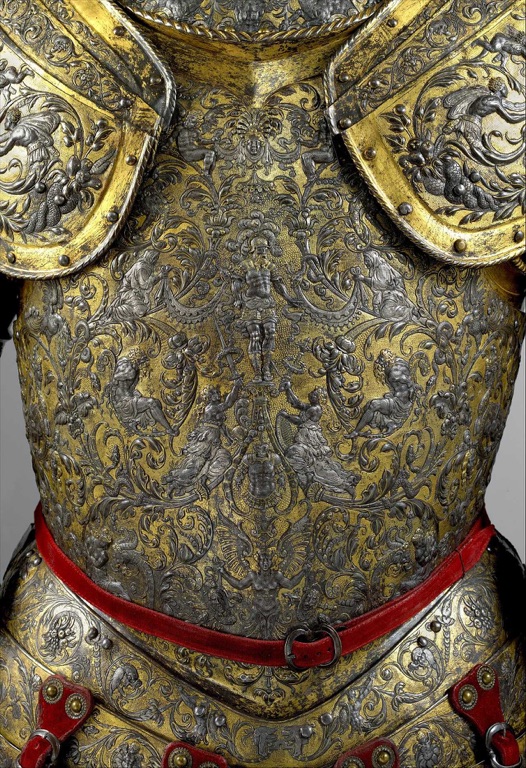
Historical Background of The Parade Armour of Henry II of France
The Parade Armour of Henry II was crafted during a period of profound transformation in France. Henry II ascended to the throne in 1547, at a time when the Renaissance was in full swing. This era, marked by a renewed interest in the arts and sciences, greatly influenced the design of the armour.
Etienne Delaune, a renowned goldsmith and engraver, is believed to have designed the armour. His work was characterized by intricate engravings and a meticulous attention to detail, traits that are evident in the Parade Armour. The armour was likely produced in the royal workshops of Fontainebleau, a hub of artistic activity during Henry’s reign.
The armour served a dual purpose. It was not only a protective gear for the king but also a symbol of his power and prestige. The detailed engravings and elaborate decorations on the armour were meant to showcase the king’s wealth and status. The armour was often worn during parades and ceremonies, hence its name.
Henry II’s reign was marked by several military campaigns, and the armour reflects this aspect of his rule. The engravings on the armour depict scenes of battles and victories, reinforcing the image of Henry as a warrior king.
After Henry’s death in 1559, the armour was preserved as a historical artifact. It is now displayed in the Musée de l’Armée, a testament to the craftsmanship of the Renaissance period and the legacy of Henry II.
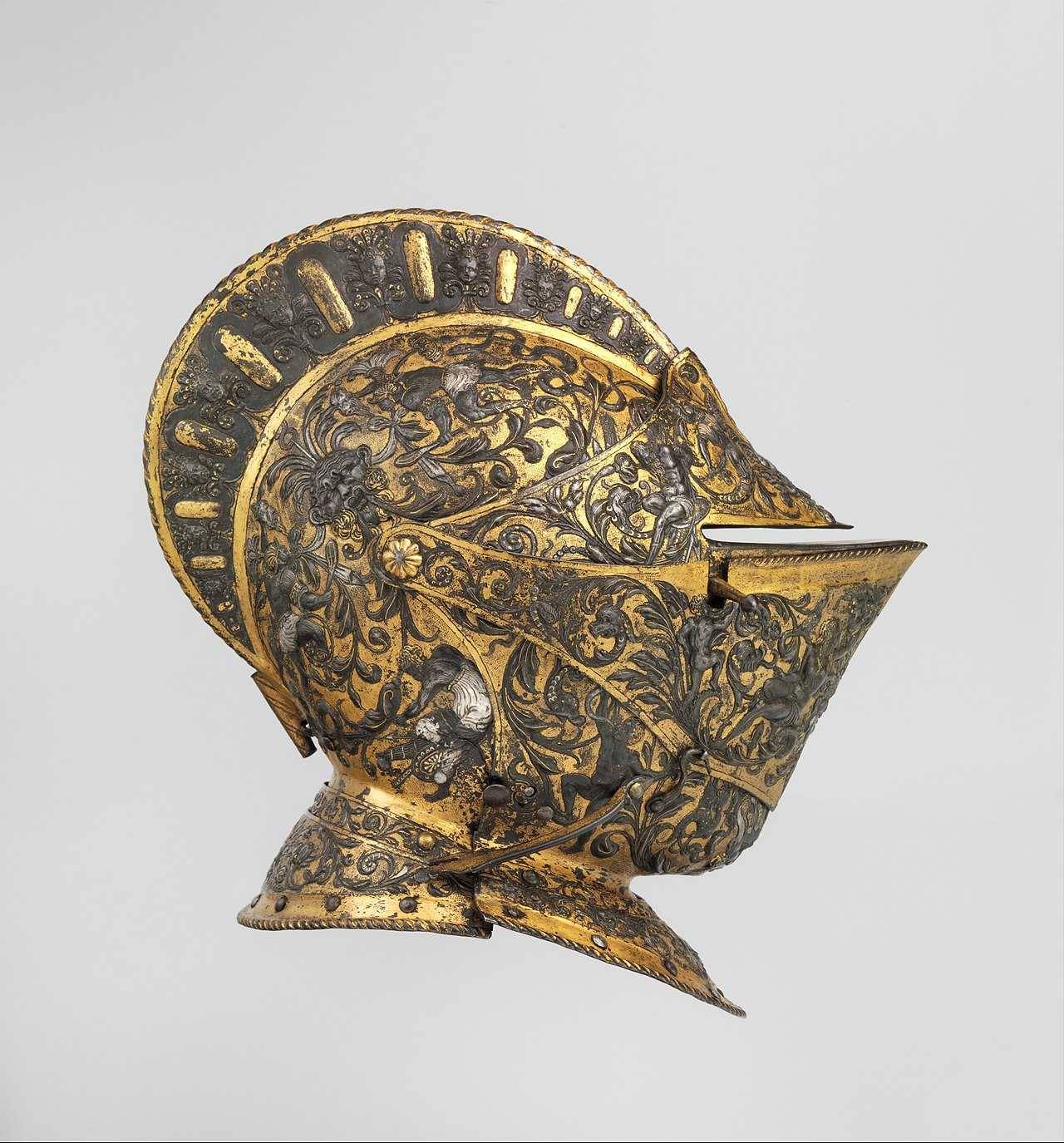
Architectural Highlights/About the Artifact
The Parade Armour of Henry II is a masterpiece of metalwork. Made of steel, the armour is fully articulated, allowing for movement while providing protection. The armour is composed of several pieces, including a helmet, breastplate, backplate, gauntlets, and leg guards.
The armour is richly decorated with intricate engravings. These engravings depict scenes from mythology and history, as well as motifs of animals and plants. The engravings are not merely decorative; they also tell a story about the king and his reign.
The helmet, for instance, features a scene of Hercules slaying the Nemean lion, a symbol of strength and courage. The breastplate is adorned with a scene of a victorious battle, a nod to Henry’s military achievements.
The armour is also embellished with gold and silver, adding to its opulence. The use of these precious metals was not just for aesthetic purposes; it also signified the king’s wealth and power.
The Parade Armour of Henry II is a remarkable artifact that embodies the artistic and technical achievements of the Renaissance period. It is a testament to the skill and creativity of the craftsmen who produced it, and a reflection of the era in which it was made.
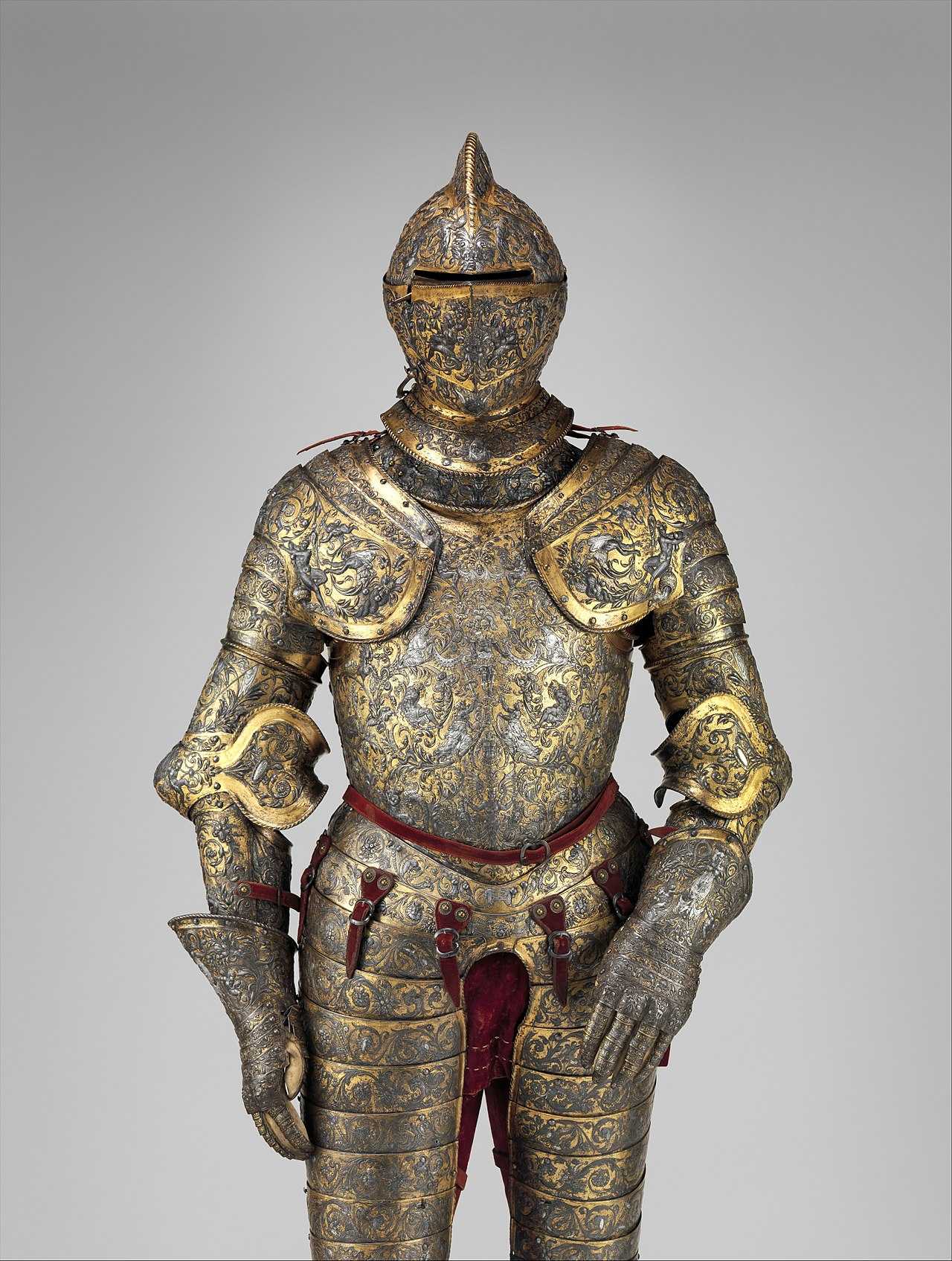
Theories and Interpretations
Over the years, the Parade Armour of Henry II has been the subject of various interpretations and theories. Some scholars believe that the armour was designed as a form of propaganda, meant to reinforce the image of Henry as a powerful and victorious ruler.
The engravings on the armour, which depict scenes of victories and heroic deeds, support this theory. These images would have conveyed a message of strength and dominance to the public, enhancing the king’s reputation.
Others argue that the armour was a reflection of the Renaissance ideals of beauty and harmony. The intricate engravings and elaborate decorations on the armour are characteristic of the Renaissance aesthetic, which valued balance, proportion, and detail.
There is also a theory that the armour was influenced by the classical tradition. The depiction of mythological scenes and figures on the armour suggests a connection to the classical past, a common theme in Renaissance art.
Regardless of the theories, there is no denying the historical and artistic significance of the Parade Armour of Henry II. It is a remarkable artifact that offers a glimpse into the past, revealing insights about the king and the era in which he lived.
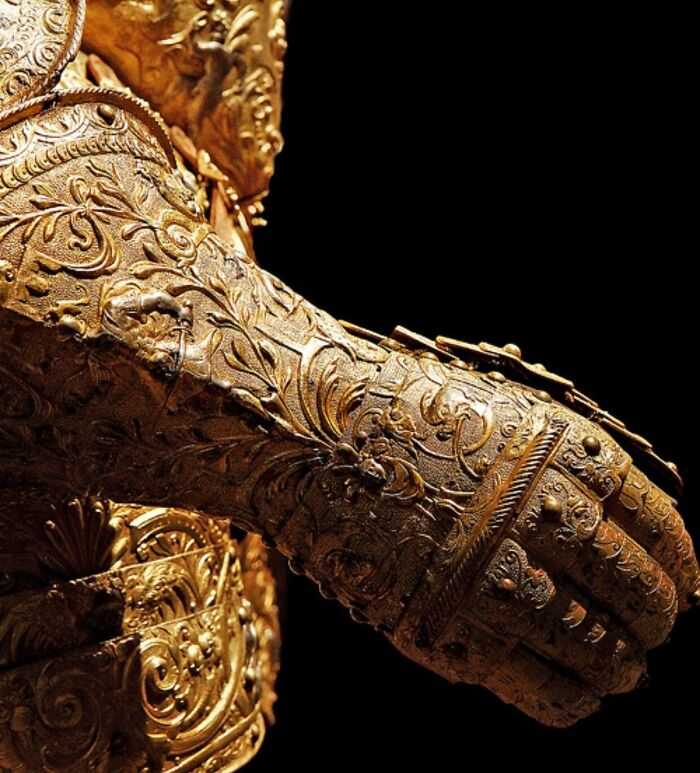
Good to know/Additional Information
While the Parade Armour of Henry II is undoubtedly impressive, it’s worth noting that it was not designed for combat. The armour was too heavy and cumbersome for practical use on the battlefield. Instead, it was worn during parades and other ceremonial events, serving as a symbol of the king’s power and prestige.
The armour is currently housed in the Musée de l’Armée in Paris. The museum, located in the Hôtel des Invalides, is home to one of the world’s largest collections of military artifacts. The Parade Armour is one of the museum’s most prized possessions, attracting visitors from around the world.
The Parade Armour of Henry II is not the only suit of armour associated with the king. Henry was known for his interest in armoury, and several other suits of armour that belonged to him are also preserved in museums.
The craftsmanship of the Parade Armour is truly remarkable. The intricate engravings and decorations on the armour required a high level of skill and precision, reflecting the technical mastery of the craftsmen who produced it.
The Parade Armour of Henry II is a fascinating artifact that offers a glimpse into the past. Whether you’re a history buff, an art lover, or simply curious, this stunning piece of armour is sure to captivate your interest.
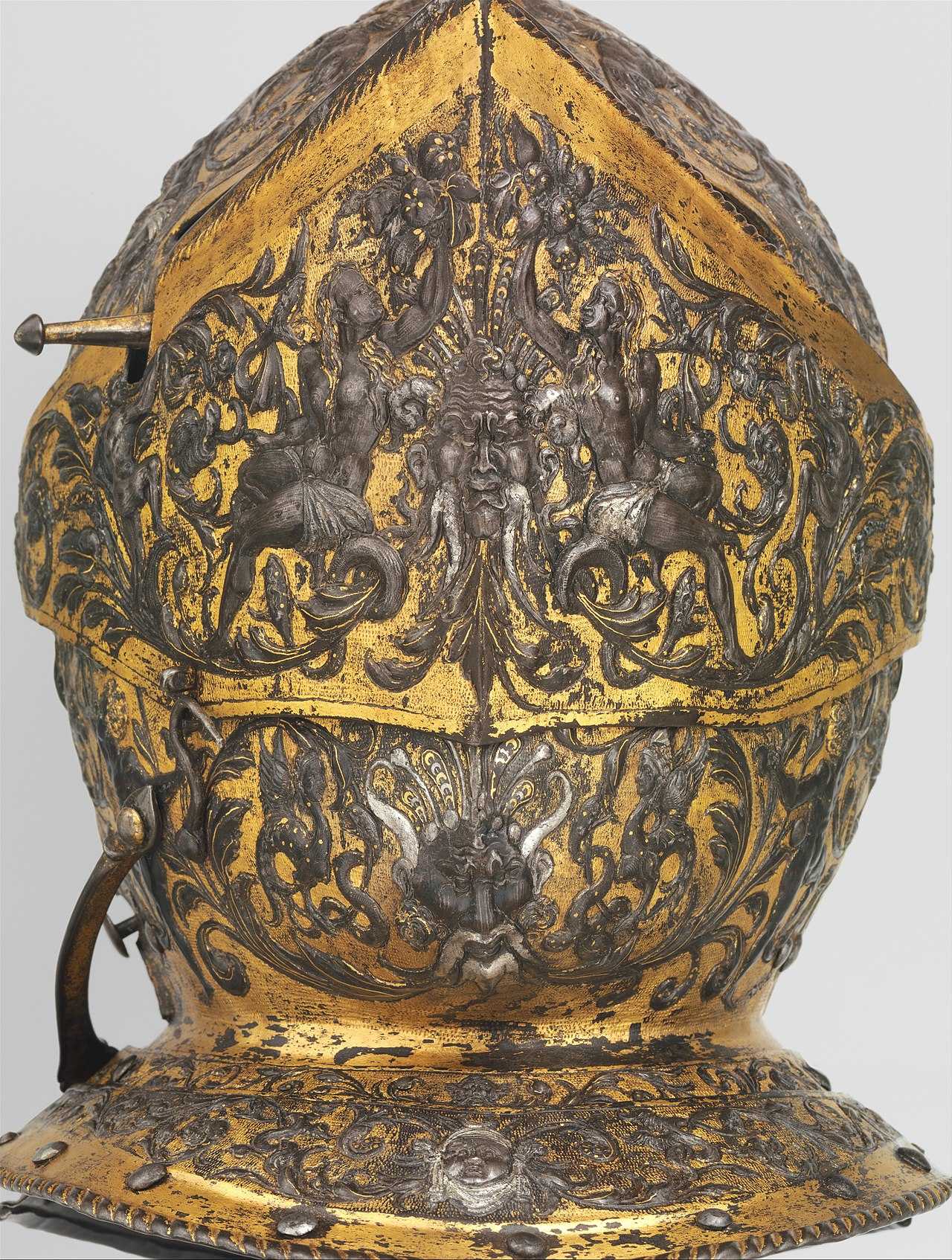
Conclusion and Sources
The Parade Armour of Henry II of France is a remarkable artifact that embodies the artistic and technical achievements of the Renaissance period. It serves as a testament to the skill and creativity of the craftsmen who produced it, and offers insights into the life and reign of Henry II. The armour continues to captivate visitors with its intricate details and grandeur, a testament to the enduring appeal of this historical artifact.
For further reading and to verify the information provided, you can visit the following sources:

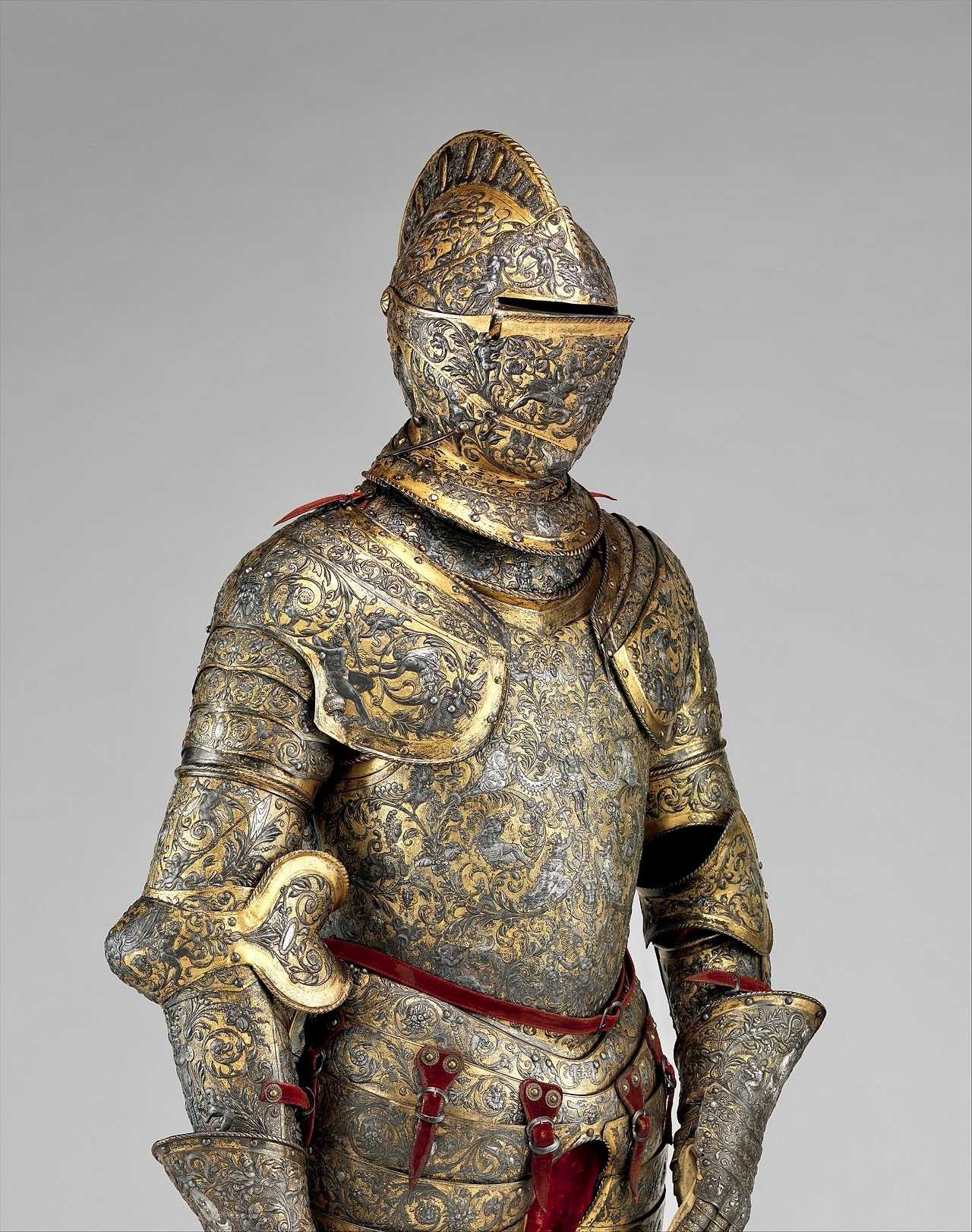
Not a word about the measurements of the wearer?